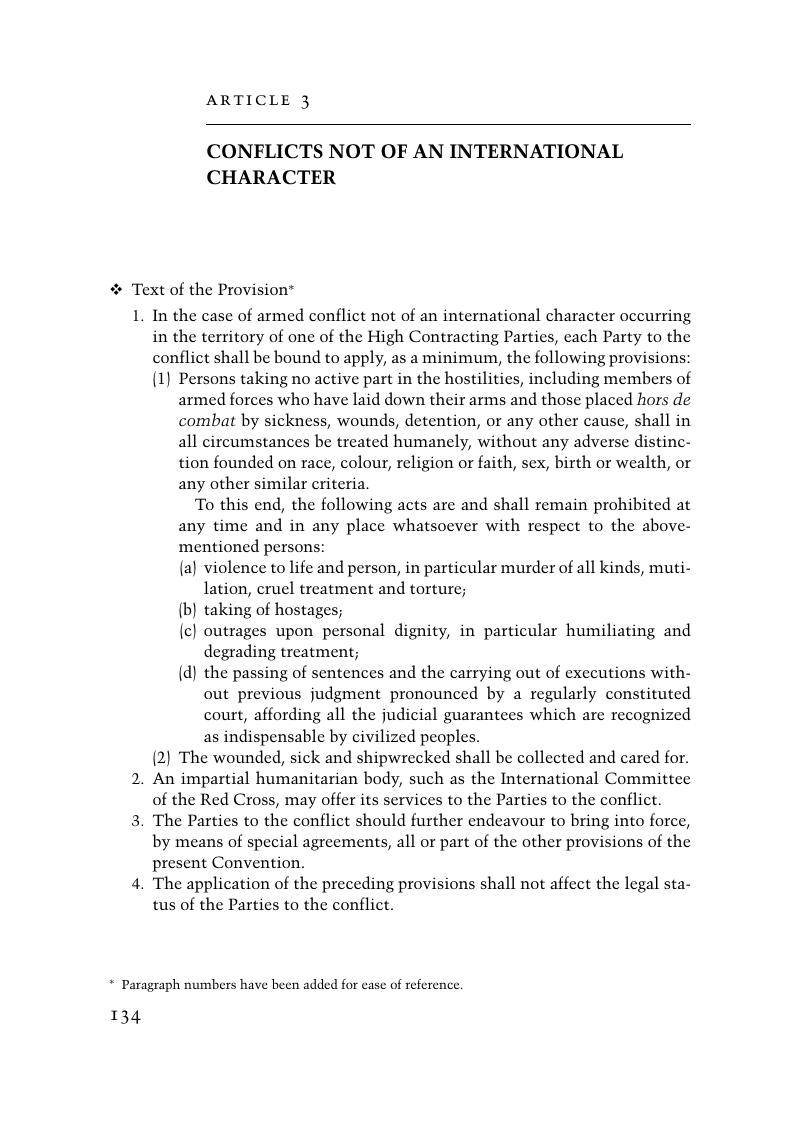 Commentary on the Second Geneva Convention
Commentary on the Second Geneva Convention Book contents
- Commentary on the Second Geneva Convention
- Commentary on the Second Geneva Convention
- Copyright page
- Contents
- Foreword by Peter Maurer
- Acknowledgements
- Abbreviations
- Introduction
- Preamble
- Chapter I General Provisions
- Article 1 Respect for the Convention
- Article 2 Application of the Convention
- Article 3 Conflicts not of an international character
- Article 4 Field of Application
- Article 5 Application by Neutral Powers
- Article 6 Special Agreements
- Article 7 Non-Renunciation of Rights
- Article 8 Protecting Powers
- Article 9 Activities of The Icrc and other Impartial Humanitarian Organizations
- Article 10 Substitutes for Protecting Powers
- Article 11 Conciliation Procedure
- Chapter II Wounded, Sick and Shipwrecked
- Chapter III Hospital Ships
- Chapter IV Personnel
- Chapter V Medical Transports
- Chapter VI The Distinctive Emblem
- Chapter VII Execution of the Convention
- Chapter VIII Repression of Abuses and Infractions
- Final Provisions
- Testimonium and Signature Clause
- Sources
- Index
- References
Article 3 - Conflicts not of an international character
from Chapter I - General Provisions
Published online by Cambridge University Press: 30 November 2017
- Commentary on the Second Geneva Convention
- Commentary on the Second Geneva Convention
- Copyright page
- Contents
- Foreword by Peter Maurer
- Acknowledgements
- Abbreviations
- Introduction
- Preamble
- Chapter I General Provisions
- Article 1 Respect for the Convention
- Article 2 Application of the Convention
- Article 3 Conflicts not of an international character
- Article 4 Field of Application
- Article 5 Application by Neutral Powers
- Article 6 Special Agreements
- Article 7 Non-Renunciation of Rights
- Article 8 Protecting Powers
- Article 9 Activities of The Icrc and other Impartial Humanitarian Organizations
- Article 10 Substitutes for Protecting Powers
- Article 11 Conciliation Procedure
- Chapter II Wounded, Sick and Shipwrecked
- Chapter III Hospital Ships
- Chapter IV Personnel
- Chapter V Medical Transports
- Chapter VI The Distinctive Emblem
- Chapter VII Execution of the Convention
- Chapter VIII Repression of Abuses and Infractions
- Final Provisions
- Testimonium and Signature Clause
- Sources
- Index
- References
Summary

- Type
- Chapter
- Information
- Commentary on the Second Geneva ConventionConvention (II) for the Amelioration of the Condition of Wounded, Sick and Shipwrecked Members of Armed Forces at Sea, pp. 134 - 336Publisher: Cambridge University PressPrint publication year: 2017
